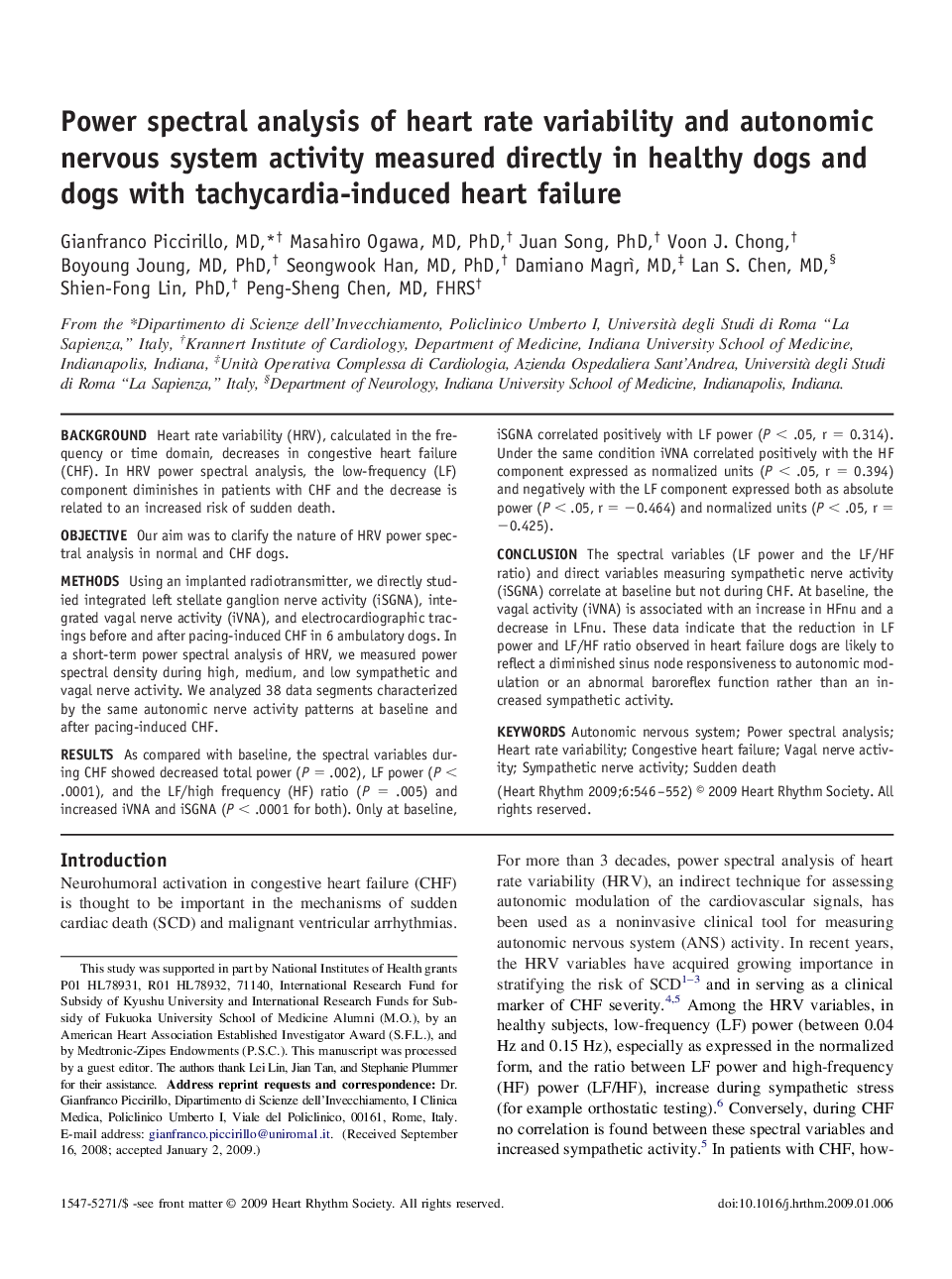| Article ID | Journal | Published Year | Pages | File Type |
|---|---|---|---|---|
| 2925037 | Heart Rhythm | 2009 | 7 Pages |
BackgroundHeart rate variability (HRV), calculated in the frequency or time domain, decreases in congestive heart failure (CHF). In HRV power spectral analysis, the low-frequency (LF) component diminishes in patients with CHF and the decrease is related to an increased risk of sudden death.ObjectiveOur aim was to clarify the nature of HRV power spectral analysis in normal and CHF dogs.MethodsUsing an implanted radiotransmitter, we directly studied integrated left stellate ganglion nerve activity (iSGNA), integrated vagal nerve activity (iVNA), and electrocardiographic tracings before and after pacing-induced CHF in 6 ambulatory dogs. In a short-term power spectral analysis of HRV, we measured power spectral density during high, medium, and low sympathetic and vagal nerve activity. We analyzed 38 data segments characterized by the same autonomic nerve activity patterns at baseline and after pacing-induced CHF.ResultsAs compared with baseline, the spectral variables during CHF showed decreased total power (P = .002), LF power (P < .0001), and the LF/high frequency (HF) ratio (P = .005) and increased iVNA and iSGNA (P < .0001 for both). Only at baseline, iSGNA correlated positively with LF power (P < .05, r = 0.314). Under the same condition iVNA correlated positively with the HF component expressed as normalized units (P < .05, r = 0.394) and negatively with the LF component expressed both as absolute power (P < .05, r = −0.464) and normalized units (P < .05, r = −0.425).ConclusionThe spectral variables (LF power and the LF/HF ratio) and direct variables measuring sympathetic nerve activity (iSGNA) correlate at baseline but not during CHF. At baseline, the vagal activity (iVNA) is associated with an increase in HFnu and a decrease in LFnu. These data indicate that the reduction in LF power and LF/HF ratio observed in heart failure dogs are likely to reflect a diminished sinus node responsiveness to autonomic modulation or an abnormal baroreflex function rather than an increased sympathetic activity.
